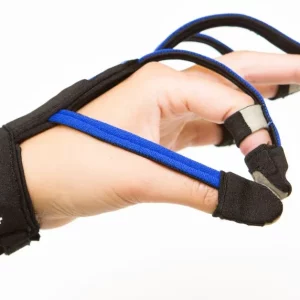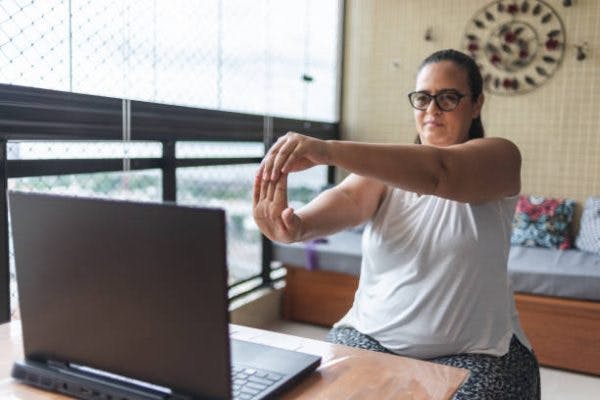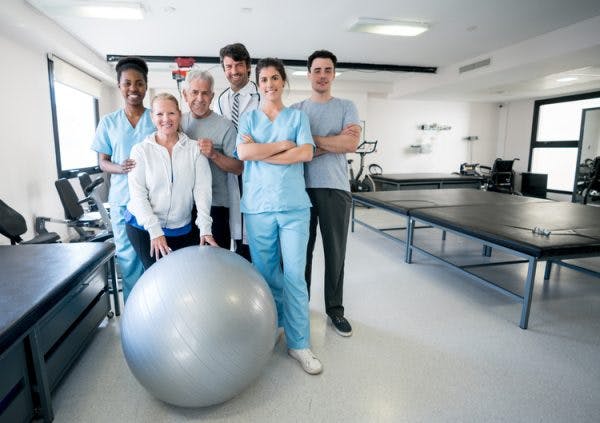If your loved one recently had a minor stroke, you may have questions about mild stroke recovery time. Your first question may be: How long does it take to recover from a mild stroke? It’s important to know that every stroke is different and therefore recovery times vary. No one can estimate a mild stroke recovery time with absolute certainty.
Still, there are some patterns worth noting for mild stroke patients. Hopefully, these patterns help you understand what lies ahead on the road to recovery.
Use the links below to jump straight to any section:
- What Exactly Is a “Mild” Stroke?
- Mild Stroke vs. TIA
- How Long Does Mild Stroke Recovery Take?
- Understanding the Stages of Mild Stroke Recovery
- Stroke Recovery Process for Mild Stroke
- A Proactive Approach Is Necessary
- Taking Charge of Your Recovery Time
What Exactly Is a “Mild” Stroke?
To understand the severity of a stroke, medical professionals have developed the NIH Stroke Scale. The NIH Stroke Scale is an assessment tool used to assess the secondary effects of a stroke. This scale helps your medical team rate the severity of your stroke by assessing your abilities for movement, vision, and speech.
A high score indicates a large stroke, while a low score implies a mild or moderate stroke. Specifically, a stroke is considered mild when a person scores less than or equal to 5 on the NIH Stroke Scale (out of a possible 42).
A score of 5 indicates very few secondary effects of the stroke. For instance, if mobility is affected, the individual is unlikely to be paralyzed. For example, the person can perhaps lift their affected arm, but it may drift down after 10 seconds or so.
It is possible for a mild stroke patient to have significant impairments in one area, but a score as low as 5 would imply that most other areas are unaffected. For example, if speech was severely affected, then mobility and vision remain mostly intact for the mild stroke survivor.
Remember every stroke is different and each prognosis will be unique, even for minor strokes.
Mild Stroke vs. TIA
Sometimes the phrase ‘mild stroke’ is used to refer to a TIA, which is incorrect. A TIA is a transient ischemic attack, also known as a “mini stroke.” Unlike a mild stroke, TIAs don’t leave permanent damage.
A mini stroke, or TIA, occurs when part of the brain experiences a temporary lack of blood flow, and when the blood flow returns there is no lasting effect. Because the event is temporary, the symptoms last for less than 24 hours.
Initially, Mini strokes, regular strokes, and TIAs all share the same symptoms, however. This means it is critical to seek emergency medical attention when someone shows any signs of a stroke.
Additionally, it’s not always clear-cut when diagnosing the severity of a stroke. Even if symptoms resolve within 24 hours, you may not necessarily have a TIA. If your brain scan detects a lesion, you will be diagnosed as having a mild stroke. When brain scans are clear, and no permanent damage detected, it is usually described as a TIA.
Mild stroke recovery time is often promising. When the stroke’s impact is mild, the brain recovers much faster and more completely than larger strokes.
How Long Does Mild Stroke Recovery Take?
If you had a mild stroke, your stroke recovery timeline will probably be shorter than others with more severe strokes. However, keep in mind that every stroke is different and recovery times vary.
Because mild strokes do not typically cause major impairments, recovery is usually fast. Often recovery from a mild stroke can occur within 3-6 months. Other times it can take longer.
One variable that reduces mild stroke recovery time is your engagement in rehabilitation activities. Instead of focusing on recovery time, try to focus on the recovery process. When you focus on the steps you can take to recover, you are empowered to take action. And action is how results occur.
Want 20 pages of stroke recovery tips in an illustrated PDF? Download our free ebook by clicking here (link opens a pop up for uninterrupted reading)
Understanding the Stages of Mild Stroke Recovery
While “mild” might sound like it’s no big deal, it’s important to remember that every stroke affects the brain, and recovery takes time and effort. Even with a mild stroke, you’ll go through several stages on your road to recovery:
- The Acute Phase (First week): This usually involves a hospital stay where doctors focus on stabilizing your condition and addressing any immediate concerns. You might experience some weakness, fatigue, confusion, or difficulty with speech or vision. Physical, occupational, and speech therapists often complete initial evaluations during this period to provide recommendations for future care and rehabilitation needs.
- Rehabilitation (Weeks to months): This is where the real work begins! Depending on your specific needs, you might work with different therapists:
- Physical therapists will help you regain strength, coordination, and balance, with a focus on improving overall mobility.
- Occupational therapists will assist you in relearning daily tasks like dressing, eating, and bathing, using adaptive tools and strategies as needed.
- Speech-language pathologists will work with you to improve communication, cognition, and any swallowing difficulties.
- Ongoing Recovery (Months to years): This phase is all about continuing to improve and learning to cope with any lasting effects. You might continue with therapies on an outpatient basis, join support groups, and make positive lifestyle changes to support your overall health and well-being.
Important Considerations:
- Everyone’s journey is different. Recovery time and specific challenges vary from person to person.
- Be patient with yourself. Focus on celebrating small victories and progress, no matter how small they seem.
- Stay positive and proactive. Actively participate in your rehabilitation plan and make healthy lifestyle choices.
- Pursue recovery daily. Consistent practice is vital to rewire the brain and promote recovery. More practice often leads to greater improvements.
- Don’t be afraid to ask for help. Lean on your support network, connect with others who have experienced a stroke, and seek professional guidance when needed.
This journey might have its ups and downs, but with the right support and a proactive approach, you can achieve a remarkable recovery and regain a fulfilling life.
Stroke Recovery Process for Mild Stroke
After a stroke, you will spend some initial time at the hospital. But instead of going to an inpatient rehab facility (where patients participate in 3+ hours of therapy per day), mild stroke patients are often discharged straight home.
Generally speaking, if you can accomplish your activities of daily living independently, you are likely to go straight home after the hospital. Your rehabilitation team should instruct you on how to continue rehabilitation at home before discharge.
Once you arrive home, stroke recovery is in your hands. It’s up to you to pursue rehabilitation exercises that will stimulate neuroplasticity in the brain and therefore grow your brain’s capacity. There are various home therapy programs to address your specific needs, especially if it’s not recommended that you go to outpatient therapy.
A Proactive Approach to Recovery After Mild Stroke Is Necessary
It’s easy to think that mild stroke survivors don’t need to do much to recover, but that’s not true. Don’t assume that recovery will take care of itself. One study noted that “patients with mild stroke are assumed to achieve full recovery with little or no intervention. However, recent studies suggest that such patients may experience persistent disability and difficulty with complex activities.”
This means that a full recovery from stroke is not guaranteed, even for minor stroke survivors. However, even though it’s not guaranteed doesn’t mean it’s not possible. The ingredient that makes recovery possible is action.
Regardless of the size of your stroke, it’s important to participate in rehabilitation activities to stimulate your brain growth and maximize your chances of recovery.
With a rigorous therapy regimen, you may reduce your mild stroke recovery time and may even achieve a full recovery.
Taking Charge of Your Recovery Time After Mild Stroke
Instead of participating in therapy at an inpatient rehab facility, most mild stroke patients are discharged home and must keep up with rehab on their own, and/or with outpatient therapy. Even if you do go to outpatient therapy, it is imperative to participate in a rigorous at-home therapy program as well. This consistent practice is necessary to stimulate brain recovery and maximize results.
Some mild stroke patients stop pursuing rehab and get stuck at the level of impairment that they initially had. This doesn’t have to happen. The brain is capable of adapting through neuroplasticity. It just needs the stimulus to grow and change.
When you put in the work, the brain will respond. This is why recovery is possible even decades after a stroke. Again, the essential ingredient is action. You will get better at the skills that you practice regularly, no matter how long it has been since your stroke.
Understanding Mild Stroke Recovery
Overall, mild stroke recovery time is shorter than for standard or large strokes. The recovery experienced is dependent upon how consistently you participate with rehabilitation activities of all kinds which stimulate your brain to recover.
Because mild stroke survivors often do not attend inpatient rehab, recovery is in your hands. The good news is that, if you keep up with a rigorous home therapy program, you are likely to experience your maximum potential.










